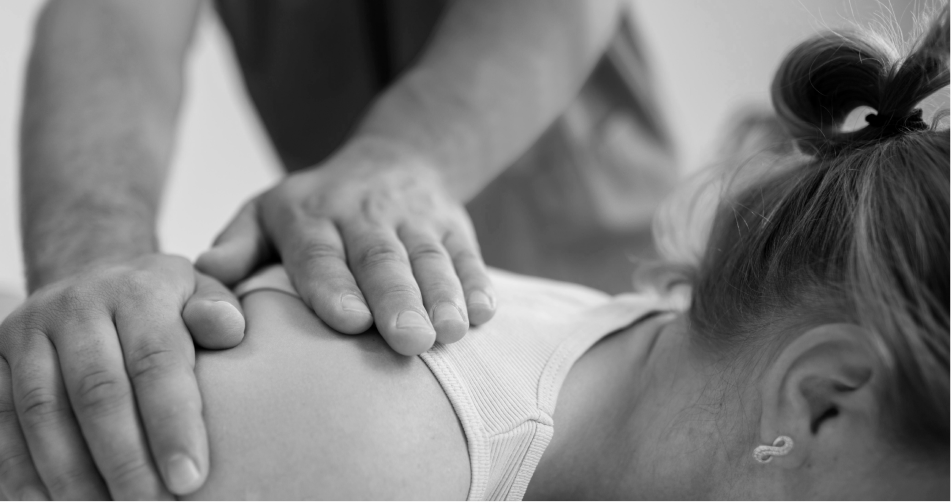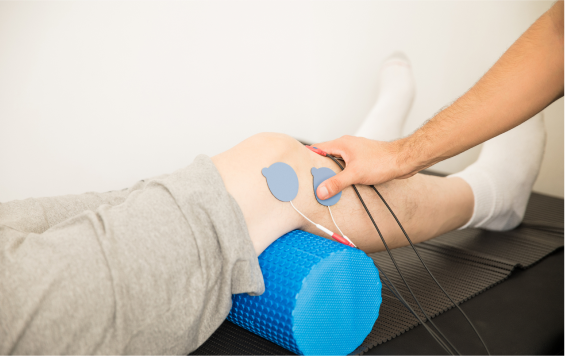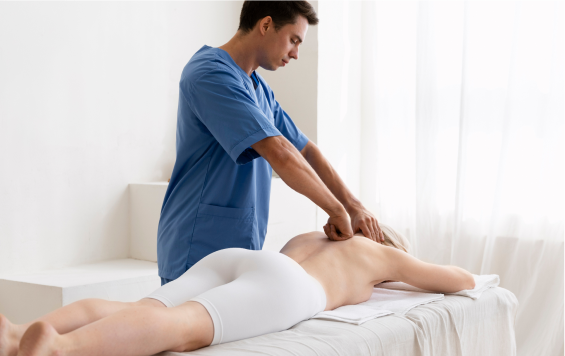A modernized
toolbox for manual
therapists

This in-person course is an area that few practitioners have been exposed to or taught and the content is essential in every clinical setting. This course is:
MODERN JOINT INSTABILITY:
Assessment, Diagnosis & Treatment


Is this course for you?
- Do you want a course that is practical & relevant to every day clinical work and patient care?
- Do you want a course that you can begin using the content on your next day at work?
- Are you equipped to identify and treat modern joint instability when it presents in your office?
- Are you ready to upgrade your clinical skills and outcomes as a manual therapy healthcare
professional?
Is this course relevant for your practice?
You will inevitably have cases of modern joint instability in your office.
It is essential to be able to identify these cases, and moreover, to be able to assess and treat them effectively. Instability is not as black and white as it was traditionally taught and can involve more structures of the body than you think. To completely resolve modern joint instability we must be able to resolve any and all nerve, muscle, ligament, and joint issues. This complete and comprehensive course will touch on every facet to ensure you can identify, evaluate and treat the most common joint instabilities.
It is essential to be able to identify these cases, and moreover, to be able to assess and treat them effectively. Instability is not as black and white as it was traditionally taught and can involve more structures of the body than you think. To completely resolve modern joint instability we must be able to resolve any and all nerve, muscle, ligament, and joint issues. This complete and comprehensive course will touch on every facet to ensure you can identify, evaluate and treat the most common joint instabilities.

Do you have patients that don’t respond to treatment? Or tough cases you cannot manage?
A stable body is a responsive body. Most often these are the patients that have instability. And their care and success depends on your ability to identify it, assess it, diagnose it and treat it effectively.
This course will overall
Streamline your assessment
skills
skills
Refine your diagnostic skills
Improve your clinical outcomes
Improve patient retention
Increase patient referrals
All while limiting your treatment time and the physical demand on your body.
It can also make you irreplaceable and able to better maintain practitioners on your team and in your clinic.
Ultimately you can become a destination clinic for many deserving patients.
It can also make you irreplaceable and able to better maintain practitioners on your team and in your clinic.
Ultimately you can become a destination clinic for many deserving patients.
This course was created for the manual therapy healthcare professional.
This course is for any and all manual therapy healthcare practitioners with the ability to perform joint manipulations or mobilizations.
The material that is taught is applicable to all patient populations and goals. It is relevant to the people of all ages, sedentary or active individuals and even professional athletes.
The material that is taught is applicable to all patient populations and goals. It is relevant to the people of all ages, sedentary or active individuals and even professional athletes.

chiropractor
As a chiropractor, your treatment style, approach and philosophy are not relevant when taking this course. If you are a chiropractor that performs adjustments only or if you are a chiropractor that performs soft-tissue therapy, this course is for you. You will refine your adjustments and even minimize care time.

physiotherapist
As a physiotherapist, your treatment style and approach will not matter. This course will expand upon your knowledge. If your practice has more of an exercise rehabilitation focus or if you are more focused on manual therapy, this course is for you. Your clinical outcomes will improve.

massage therapist
As a massage therapist, it is within your scope to perform joint mobilizations; therefore you can assess your patients and treat with all content of this course. If your practice is wellness based with gentle techniques or sports based with deep tissue, this course is for you. Assessment and treatment tools will only provide better outcomes.
You will learn to
treat joint instability
as the primary course objective.
Specifically, you will learn how to assess, diagnose and treat:
- Upper Cervical Spine Joint Instability
- Thoracolumbar Joint Instability
- Lumbar Spine Joint Instability
- Sacroiliac Joint Instability
Instability has evolved from the classical version and expanded to include a modern spectrum of these conditions. You see this regularly in your practice and it becomes prudent to at least identify and assess instability. The ability to treat this is doing justice to your patients as you can care for them the best way possible.

You will also learn the three major causes
of modern joint instability.
This is a critical element to assessing, diagnosing and treating joint instability. Most practitioners treating instability
care for one type, but this is insufficient. You must understand these causes, how to assess and manage them in
systematic order and how to treat them. A patient may have one or may have all three.
care for one type, but this is insufficient. You must understand these causes, how to assess and manage them in
systematic order and how to treat them. A patient may have one or may have all three.


In learning to treat instability, you also have to learn to restore stability.
Specifically you will learn how to:
Adjust and restore C1 vertebra alignment
Without the regular or mandatory requirement and use of X-rays.
Without the risks or stigma traditionally believed to be associated with cervical spine adjusting.
Without the risks or stigma traditionally believed to be associated with cervical spine adjusting.
- Adjust and restore thoracolumbar TL joint alignment
- Correct lumbar spine joint function
- Correct sacroiliac joint function
Alongside adjusting and correcting these segments you will discover how to restore neuromuscular function of all the muscles of the body to support this.
Learning the 5 neuromuscular inhibitory chains of the body will be an integral part of restoring stability and neuromuscular function.
This will teach you:
The comprehensive flow of muscle inhibitory patterns that can maintain or impair joint stability including:
- The five sources of gluteus minimus muscle inhibition
- The four sources of psoas muscle inhibition
- The source of core and low back inhibition
- The source of headaches and neck muscle inhibition
And so much more!

This course is your complete guide to
assessing and treating the body.
It will teach you the most ideal and practical ways to evaluate these conditions including guidelines to
treating regardless of the severity and refined methods of orthopedic testing.
It will teach you WHY conditions exist. And therefore make you better able to diagnose treat these
conditions effectively.
treating regardless of the severity and refined methods of orthopedic testing.
It will teach you WHY conditions exist. And therefore make you better able to diagnose treat these
conditions effectively.
Conditions such as:
Headaches
Neck pain
Supraspinatus
tendinopathy
Low back pain
Piriformis
Syndrome
Pelvic floor
dysfunction
Gluteus minimus
tendinopathy
Patellar
tendinopathy
Plantar fasciitis
Testimonial
“This was one of the most important courses that I have ever taken to improve my clinical skills. It has been an absolute game changer for myself and my clients!”

PAUL KROLRMT
Course Specifics:
Hours: 9-5:30pm, one-hour lunch
CE Credits available: 7 hours
Instruction: 3 hours
Practical: 3 hours
Cases: 1 hour
$999
regular rate

Upcoming Course Locations:
Calgary, AB (COMPLETED)
November 23, 2024
REGISTration and Future courses:
We provide this in-person course based on request and demand. We require a minimum group of 8 practitioners to host this course. If you have a group and would like to have this in-person course in your area, or to be added to our mailing list for future course notifications, please contact us with the form below. We will only notify you about our courses and not unrelated content.

Course
Instructor:
Our lead Instructor is Dr. Ryan Emmons. Dr. Emmons is a CMCC graduate and has been in practice since 2006. Since 2017, Dr. Emmons went on his own personal journey to heal his own upper cervical instability and long list of challenging symptoms. To date, his personal case was still the worst case he has treated and this has allowed him to successfully treat hundreds of cases. He has developed, evolved and refined many aspects of modern joint instability to the course that we have here today. Having experienced this condition first hand allows Dr. Emmons to have a very unique perspective and is why he is very passionate about this topic.
Contact us:
If you have any questions beyond the information
provided here, you can contact us at
provided here, you can contact us at
clinicalupgrade@gmail.com
